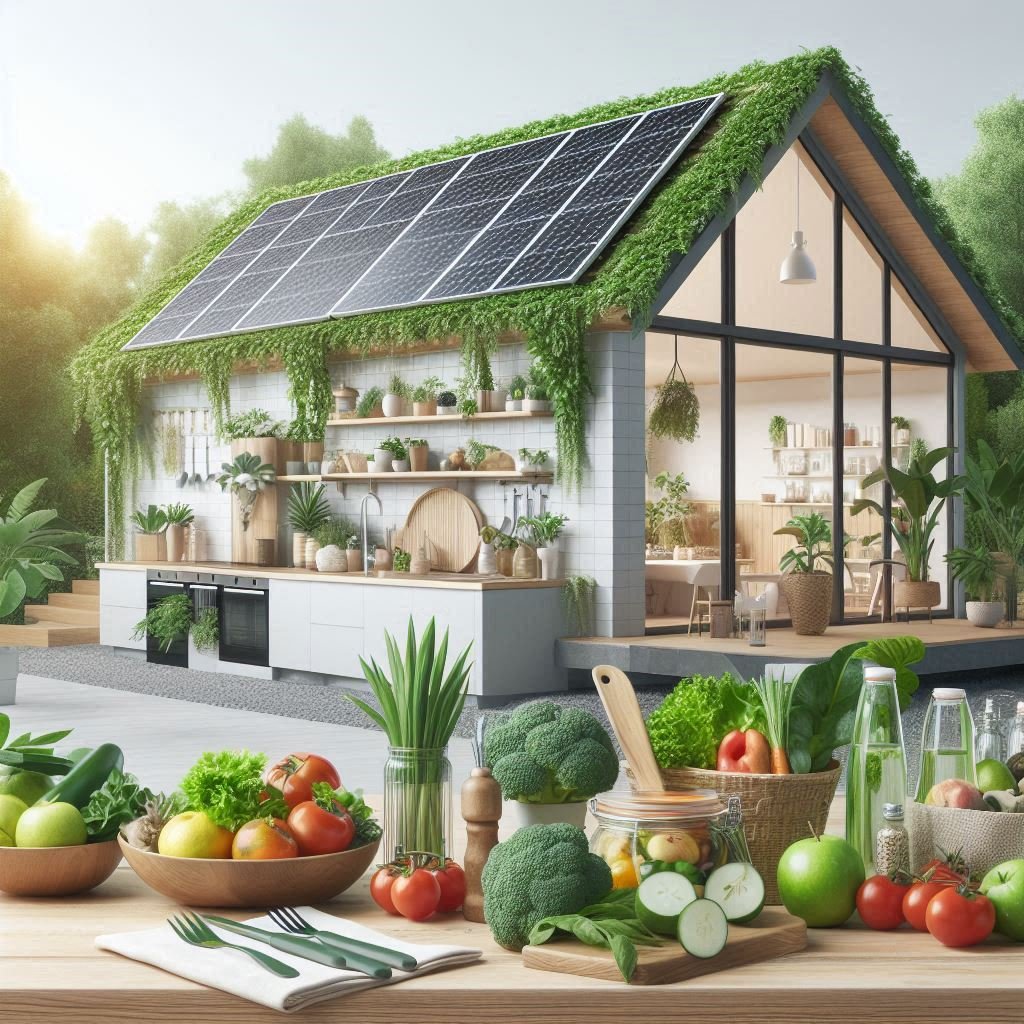In recent years, sustainability has evolved from a niche concern to a mainstream movement influencing various aspects of our lives. As environmental challenges become more urgent, people are increasingly embracing sustainable living practices.
This article explores the top trends in sustainable living for 2024, highlighting innovations and lifestyle shifts that are shaping a greener future.
1. Eco-Friendly Home Innovations
One of the most prominent trends in sustainable living is the rise of eco-friendly home innovations. Homeowners are seeking ways to reduce their environmental footprint, and the market has responded with a range of green technologies and products.
- Solar Panels and Energy Storage: Advances in solar panel technology and energy storage solutions are making renewable energy more accessible and efficient. Modern solar panels are more efficient and aesthetically pleasing, and home battery systems allow for energy storage and use during non-sunny periods.
- Smart Home Technology: Smart thermostats, energy-efficient appliances, and home automation systems help optimize energy use. These technologies enable homeowners to monitor and control their energy consumption more effectively, reducing waste and lowering utility bills.
- Sustainable Building Materials: The use of sustainable and recycled building materials, such as bamboo, reclaimed wood, and recycled steel, is on the rise. These materials offer environmentally friendly alternatives to traditional building supplies.
2. Plant-Based and Lab-Grown Foods
The food industry is undergoing a significant transformation with the rise of plant-based and lab-grown foods. These innovations address the environmental impact of traditional agriculture and animal farming.
- Plant-Based Diets: The popularity of plant-based diets continues to grow, driven by concerns about health, animal welfare, and environmental sustainability. Companies are developing a wide range of plant-based products, from meat alternatives to dairy substitutes, making it easier for individuals to adopt a vegetarian or vegan lifestyle.
- Lab-Grown Meat: Lab-grown or cultured meat is emerging as a sustainable alternative to conventional meat production. By growing meat in a lab from animal cells, producers can reduce the environmental impact associated with livestock farming, including greenhouse gas emissions and land use.
- Vertical Farming: Vertical farming is an innovative agricultural method that uses vertically stacked layers to grow crops. This technique can reduce the land footprint and resource use compared to traditional farming methods, making it a promising solution for urban agriculture.
3. Zero-Waste Lifestyle
The zero-waste movement is gaining traction as people seek to minimize their environmental impact by reducing waste generation. This lifestyle promotes the idea of reusing, recycling, and composting to achieve a waste-free lifestyle.
- Reusable Products: The use of reusable products, such as water bottles, shopping bags, and food containers, is becoming more common. These products reduce the need for single-use items and help decrease the amount of plastic waste in landfills and oceans.
- Composting: Composting is gaining popularity as a way to manage organic waste. Home composting systems and community composting programs allow individuals to turn kitchen scraps and yard waste into nutrient-rich compost for gardening.
- Upcycling: Upcycling involves repurposing old or discarded items into new, useful products. This practice reduces waste and encourages creativity, as people transform materials that might otherwise end up in the trash.
4. Sustainable Fashion
The fashion industry is undergoing a significant shift towards sustainability, driven by consumer demand for eco-friendly and ethically produced clothing.
- Ethical Brands: Many fashion brands are adopting ethical practices, such as fair trade certification and transparent supply chains. Consumers are increasingly choosing brands that prioritize ethical labor practices and environmental responsibility.
- Eco-Friendly Fabrics: The use of sustainable fabrics, such as organic cotton, recycled polyester, and Tencel, is on the rise. These materials offer environmentally friendly alternatives to conventional textiles and contribute to reducing the fashion industry’s overall environmental impact.
- Second-Hand and Vintage Clothing: The popularity of second-hand and vintage clothing is growing as people seek unique and sustainable fashion options. Thrift stores and online resale platforms provide opportunities for consumers to find high-quality, pre-loved items.
5. Sustainable Transportation
Transportation is a major contributor to greenhouse gas emissions, and sustainable transportation solutions are gaining momentum as part of the push towards greener living.
- Electric Vehicles (EVs): The adoption of electric vehicles is increasing as technology improves and charging infrastructure expands. EVs offer a cleaner alternative to traditional gasoline-powered cars, reducing emissions and dependence on fossil fuels.
- Public Transit and Cycling: There is a growing emphasis on public transit and cycling as sustainable transportation options. Investing in efficient public transportation systems and bike-friendly infrastructure can help reduce traffic congestion and lower emissions.
- Car-Sharing Services: Car-sharing programs provide an alternative to car ownership, allowing individuals to access vehicles on an as-needed basis. This approach can reduce the number of cars on the road and promote more efficient use of transportation resources.
The trend towards sustainable living is more than just a passing fad; it represents a significant shift in how we approach our impact on the environment.
From eco-friendly home innovations to sustainable fashion and transportation, these trends are shaping a greener future and encouraging individuals to adopt more responsible lifestyles. By staying informed about these developments and making conscious choices, we can all contribute to a more sustainable world.
Share via:



